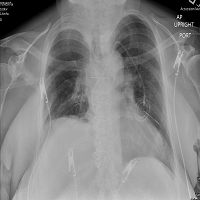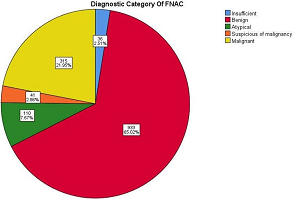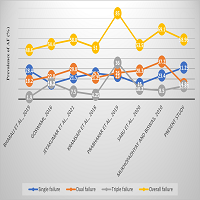INTRODUCTION
We have seen new and small biotechnology (including public) companies make too many unnecessary mistakes in the early clinical development of their product. Many of the reasons for these problems are related to their lack of experience in this complicated expensive undertaking. Our experience shows that in order to successfully develop a drug or biologic in the United States, a company must have enough financing, patents protection, rigorous regulatory plan, the right contract research organization (CRO), optimum use of academic and other consultants, good clinical investigators, and a product that will have an acceptable return on investment.
Many companies can follow the regulatory and clinical pathway as taken by similar products. This information can often be gleaned from medical literature, drug package inserts, and the governmental website www.clinicaltrials.gov. This process usually begins with the patent process.
PATENTS
A mistake with patents can be the first serious misstep companies make in their developmental pathway. If a patent strategy is not constructed properly it can be denied, overturned, litigated, infringed upon, or totally lack adequate intellectual property protection. The best way to avoid this is to use a highly experienced patent attorney in the specific product arena. It can be a costly process but an essential process to avoid downstream problems. The specific countries that you want covered in the patents is another major decision to be made.
One must also determine that you have the “freedom to operate” without infringing on someone else’s patents.
CAPITAL REQUIREMENTS AND COSTS
Underestimating the cost of the project is a fundamental miscalculation that can affect so many other subsequent decisions and may lead to the downfall of the program. Drug development is very expensive, and it can be difficult to determine the amount of capital required because of regulatory issues, supply chain disruptions, timeline extensions due to overestimation of subject enrolment timelines or occurrence of unanticipated safety issues. If the capital required is underestimated it frequently leads to poor choices in the selection of less expensive/less effective CROs, consultants, investigators, vendors with subsequent poor quality of the protocol, endpoints, number of subjects, and duration of the clinical trial. In the highly pressurized, hurried, and need to raise capital environment, founders frequently present an overly optimistic appraisal of their drug development process. If investors were provided with inaccurate costs and timelines, they can exert additional pressure on the development team, which can further lead to mistakes and poor results. Therefore, understanding and obtaining adequate capital is tantamount to drug and biological development.
Promising Unrealistic Expectations for Investors
Unrealistic goals, targets, and milestones are met with an inadequate explanation or knowledge of the product’s market size, regulatory pathway, or reimbursement. This will then set overly aggressive timelines (enrollment, clinical operational procedures, and duration) that lead to underestimated budgets, putting excessive pressure on everyone involved in the project.
The Regulatory Pathway
Is there an established clear regulatory track for approval? One must know how difficult and complex the regulatory hurdles will be. This sets the foundation for establishing the timelines and economic requirements for the entire product development. Regulatory guidelines can often be vague and confusing. An experienced regulatory team is required to negotiate the optimum way forward with regulatory agencies as well as to provide the essential elements for each required protocol.
Specific sections such as safety, inclusions, exclusions, the objectives, and endpoints should also be reviewed by an appropriate experienced medical officer.
Enrollment
The enrollment velocity in a clinical trial is based on a multitude of factors, many which are listed in Table 1.
| Table 1. Factors Responsible for Enrollment Velocity |
| Indication |
| Incidence and prevalence |
| Inclusion criteria |
| Number of nationally competing studies |
| Number of studies at investigator’s site |
| Adequate and experienced staff at investigator site |
| Timely and adequate payments to investigator |
| Timeline for study startup (Academic vs. Community sites) |
| Central versus local IRBs |
| Phase of the clinical trial |
| Number of onsite visits required |
| Number, complexity, and severity of the procedures |
| Oral versus parenteral dosage |
| Safety and known adverse effects of the medication |
| Subject grant for study expenses |
| Marketing of the clinical trial |
OPERATIONAL ISSUES AND LACK OF EXPERIENCED DRUG DEVELOPMENT STAFF
Academic Experts
Academics understand basic and clinical science but that does not mean that they understand regulatory science. They frequently have had limited interactions with the regulatory agencies, mainly from a site perspective. Although many academics will be able to help with scientific and medical inclusion exclusion/criteria (I/E), laboratory, and other tests, they often suggest excessive unnecessary tests outside the need for regulatory approval. They tend to add esoteric biomarkers, etc. to a trial which drive up costs but have no impact on the decision to move to the next level of development. These esoteric tests may not be required to drive drug development, and perhaps should be reserved for later stages of development. For example, there is no reason to get biomarkers in Phase I studies of healthy volunteers. This is unlikely to have any utility due to subjects not having the disease and the short duration of dosing.
Other inappropriate suggestions involve overly complex, impractical single ascending dose/multiple ascending doses (SAD/MAD) pharmacokinetic studies. This may not only increase the costs but can also extend the timeline, make enrollment more difficult, and threaten the entire study.
Academic advisors may not fully understand patient safety and pharmacovigilance and may try to impose inappropriate stopping rules such as those based on serious adverse events (SAEs) rather than related SAEs.
Inadequate Selection Criteria for Selecting a CRO
Selecting the right CRO for a small biotech company is one of their most critical decisions. A large well-known CRO is appropriate for a large global study, but the attention needed, conservative budget and dedicated team (not having the CRO’s staff constantly changing) is usually better off hiring a small to midsize organization for a typical early phase study.
When sending out requests for proposals (RFPs), one should use a Responsibility Grid, which clearly lays out the specific tasks that you want the CRO to undertake as it helps accurately compare the diverse bids from each contract research organization. If you do not send out a detailed RFP, you will not be able to adequately compare bids.
The project manager (PM) is the most important person on the CRO’s team. The PM should have the right chemistry with your team. If the CRO does not agree to assign a specific PM that you both had agreed upon for your project, it is better to not use this organization.
Poorly Trained Investigators Who Do Not Follow the Protocol
It is important not only to use investigators who are able to enroll the proper subjects but can do this correctly and according to good clinical practices (GCPs).
If they enroll unqualified subjects, have too many protocol deviations, or other major GCP violations it could cause data integrity problems and put the entire study at risk. The investigator must have an experienced, cooperative clinical coordinator and staff. The clinical site coordinator is the essential key to conduct of the study at each site.
Lack of Medical Oversight for Strategy and Safety
Many small early-stage biotechnology companies do not want to add the cost of hiring expensive experienced physician drug developers. This frequently adds an unnecessary risk of inappropriate (frequently too aggressive) study-stopping rules, or too few or too many safety laboratory tests. Lack of experienced medical monitors frequently leads to the following problems:
• Inappropriate protocol
o Poorly conceived I/E criteria thereby making enrolment difficult.
o Too many or too few visits and procedures, increasing the cost and timelines.
o Poorly worded endpoint which threatens the success of the study.
• An informed consent form that does not list any of the potential adverse effects (AEs).
• Not recording AEs when it is erroneously thought to be part of the disease process and therefore does not have to be recorded as an AE.
• Moving from one lower dose cohort to a higher dose cohort without proper monitoring from a safety committee.
• Using a safety review committee (SRC) when the potential subject’s risk necessitates an impartial data safety review committee data and safety monitoring board (DSMB).
• Not having an expert to quickly address the investigator’s questions on enrollment.
• This problem can be obviated by the use of a functional service provider, a part-time medical officer or a medical monitor.
o This is similar to the use of a less full-time expensive project manager or clinical trial associate.
o Examples of these organizations are MedSurgPI LLC, tranScrip, Exquisite Biomedical Consulting, BLA-Regulatory and Polaris Partners.
MARKET
Is the Product Worth the Risk of Development?
The development of a new drug or biological product is extremely expensive and time consuming. Therefore, a careful, detailed, and complete analysis should be undertaken in regard to the size of the market. The following three questions should be asked very early in development:
Will There be a Significant Medical Need for the Product and Will Patients Benefit?
Determine prior to investments if physicians and patients want or need such a product. Is there a large enough market and potential financial return to make the risk worth the effort? Will this product help improve patient lives? You want to ensure the product will be competitive with the current and future products in development.
The ideal product would be an oral product used no more than once per day with few minor adverse effects. Companies want to make sure that health care professionals will want to prescribe their product and the public will want to administer it. Most studies that provide this type of data such as quality of life, and pharmacoeconomic results are conducted in phase 3 and 4 clinical trials. However, if possible, early phase trials should try to entice both physicians and patients to the benefits of the product.
What will the Reimbursement be for this Product?
There is no point in developing a product unless there is a significant probability to receive adequate reimbursement for the product. This question is sometimes not sufficiently investigated or is presented with a too optimistic biased opinion. Federal and private insurers may not reimburse ‘me too’ products with no significant efficacy or safety advantage over current therapy or novel drugs with extremely expensive price tags.
Will There be a Good Return on Investment?
This must be one of the first questions answered. There must be enough economic incentive to make the risk of this undertaking feasible. Specific formulas and experts can help provide guidance for this essential question.
FUTURE TRENDS
Early phase clinical trials will become more complex and difficult to successfully complete without a great deal of sophistication. Many of these trials will employ new technological innovations with digital devices generating more real time continuous data. Thus, allowing for more patient centric and remote data collection to be more fully realized.
The Food and Drug Administration (FDA) has just released new guidelines, entitled “Expansion cohorts: Use in First-inHuman Clinical Trials to Expedite Development of Oncology Drugs and Biologics”. Guidance for Industry, March 2022. In this guideline, the FDA states:
“To limit the number of subjects that could be exposed to unacceptable safety risks or an ineffective drug, sponsors should establish an infrastructure to streamline trial logistics, facilitate data collection (see section VII., Safety Considerations), and incorporate plans to rapidly assess emerging data in real time and to disseminate interim results to investigators, institutional review boards (IRBs), and regulators”.
This guidance is an example of how these early phase clinical trials will be more demanding and intricate than previously imagined.
CONCLUSION
In our experience of serving as pharmaceutical executives for many biopharmaceutical and contract research organizations, we have seen all these avoidable common mistakes in early-phase product development. Many of these errors could be avoided if companies use experienced drug development professionals to assist them. There is no shortcut to drug development. In order to be successful, one must have enough financing, sufficient patents, and an experienced team of professional drug developers either on staff or as consultants who will help ensure an optimum pathway to product approval. The release of the new FDA guidance to expand first-in-human trials clearly demonstrates the increased complexity that future clinical trials will require.
It is hoped that this opinion piece will help make early clinical trials more effective, economic, and timely, so that more products can come successfully to the market.
CONFLICTS OF INTEREST
The authors declare that they have no conflicts of interest.







